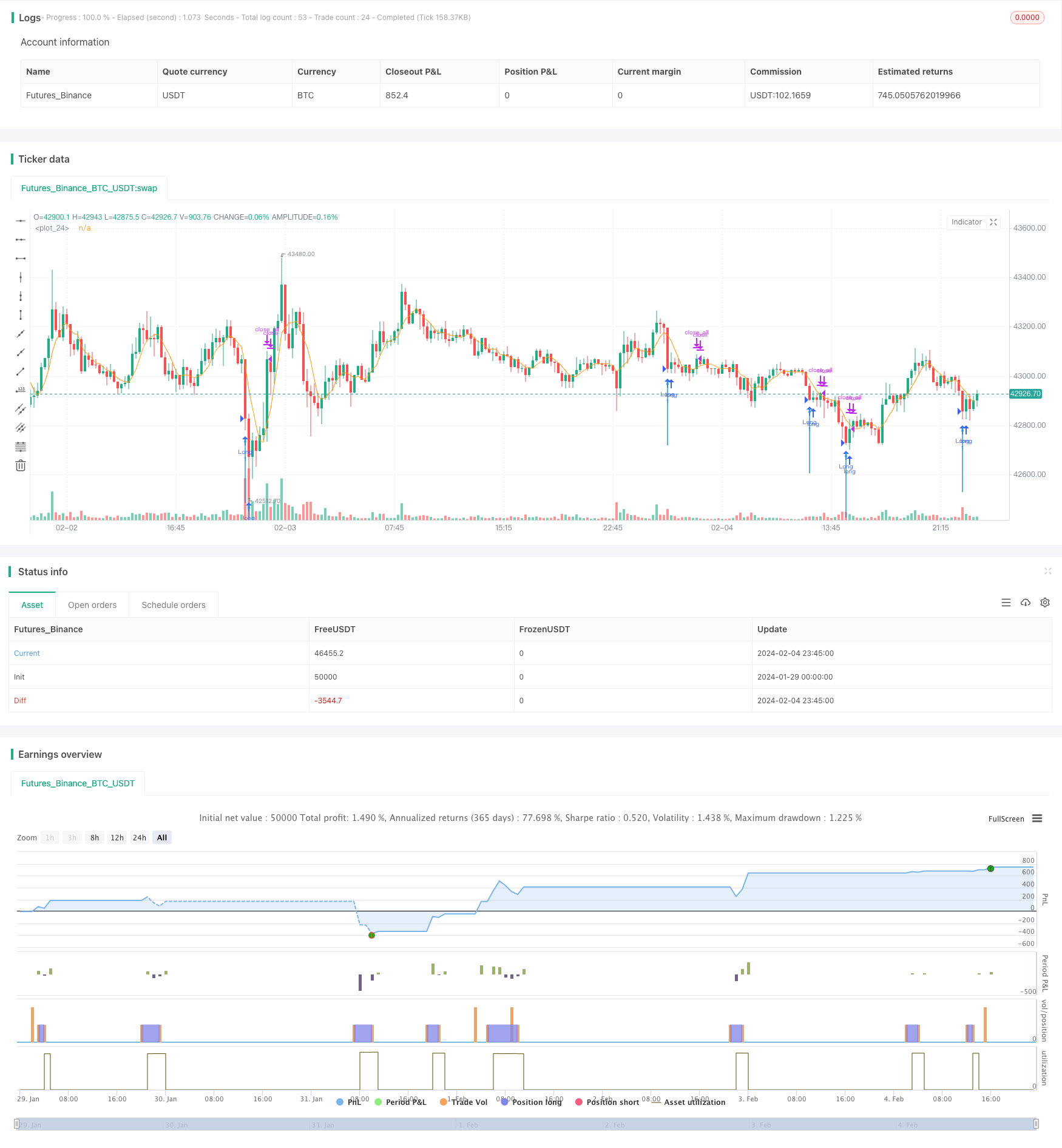
概述
该策略通过计算快速RSI指标和K线实体过滤,判断市场是否处于超卖状态,从而实现低吸操作。当快速RSI低于10并且K线实体放大,认为行情反转的信号出现,这样可以实现对市场底部的判断。
策略原理
该策略主要基于两部分指标进行判断:
快速RSI指标。通过计算最近2天的涨跌幅,来快速判断市场的超买超卖。当快速RSI低于10时,表示市场处于超卖状态。
K线实体过滤。通过计算K线实体体积与均线的比值,当实体体积大于1.5倍均线体积时,认为是底部信号出现。
首先,快速RSI低于10表示市场超卖;然后,K线实体放大,满足实体体积大于1.5倍均线体积。当两者条件同时满足时,发出做多信号,认为市场处于反转底部,这样可以过滤掉许多假信号。
策略优势
该策略有以下几个优势:
- 快速RSI指标灵敏,可以快速判断超买超卖。
- K线实体过滤增加确定性,避免假突破。
- 结合快速指标和K线形态,可以有效判断市场反转点。
- 实现低吸操作,可以在相对低点进入市场。
- 策略思路简单清晰,容易理解实现。
风险分析
该策略也存在一些风险:
- 市场可能存在拉胯期,即使超卖也可能持续下跌。
- 快速RSI可能产生假信号,実体过滤也可能被突破。
- 量化策略回测存在过拟合风险,实盘可能效果差异。
针对风险,可以通过以下方式优化:
- 结合趋势指标,避免메场持续下跌。
- 增加其他过滤条件,确保底部确认态势。
- 对参数进行多组合优化,提高稳定性。
优化方向
该策略可以从以下几个方向进行优化:
- 增加止损策略,控制亏损风险。
- 结合波动率指标,避免市场异常波动带来的风险。
- 增加多因子模型,确保交易信号效果。
- 利用机器学习算法进行参数优化。
- 在大时间周期判断趋势,避免逆势交易。
总结
本策略通过快速RSI指标判断超卖加上K线实体过滤,实现了对市场底部的有效判断。策略思路简单,易于实现,可以获取反转机会。但也存在一定的风险,需要进一步优化以提高稳定性和实盘表现。总体来说,基于该思路设计的底部反转交易策略值得进一步研究。
策略源码
/*backtest
start: 2024-01-29 00:00:00
end: 2024-02-05 00:00:00
period: 15m
basePeriod: 5m
exchanges: [{"eid":"Futures_Binance","currency":"BTC_USDT"}]
*/
//@version=3
strategy("MarketBottom", shorttitle = "MarketBottom", overlay = true)
//Fast RSI
src = close
fastup = rma(max(change(src), 0), 2)
fastdown = rma(-min(change(src), 0), 2)
fastrsi = fastdown == 0 ? 100 : fastup == 0 ? 0 : 100 - (100 / (1 + fastup / fastdown))
//Body Filter
body = abs(close - open)
abody = sma(body, 10)
mac = sma(close, 10)
len = abs(close - mac)
sma = sma(len, 100)
max = max(open, close)
min = min(open, close)
up = close < open and len > sma * 2 and min < min[1] and fastrsi < 10 and body > abody * 1.5
plotarrow(up == 1 ? 1 : na, colorup = blue, colordown = blue)
sell = sma(close, 5)
exit = high > sell and close > open and body > abody
plot(sell)
if up
strategy.entry("Long", strategy.long)
if exit
strategy.close_all()